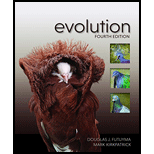
Concept explainers
(a)
To explain: The reason for fusion of hind limb bones during embryonic development of birds is a derived trait, not an ancestral trait, relative to the unfused condition in crocodiles.
Introduction: Inheritance is the basis of evolution. The study of the evolution of descendants from common ancestors is called phylogeny. A phylogenetic tree is a diagrammatical analysis of the evolution of an organism.
(b)
To explain: The reasons for unstable phylogenetic evidence of the development of pentadactyly are homologous in humans and crocodiles.
Introduction: The study of the evolution of descendants from common ancestors is called phylogeny. Depending upon common antecedents, there are three taxa, namely monophyletic (contains all descents from a common ancestor), paraphyletic (comprises only some descendants of a common ancestor), and polyphyletic (contains species with different ancestors).
(c)
To explain: The reasons for unstable phylogenetic evidence of the development of sting of wasp from ovipositor.
Introduction: Inheritance is the basis of evolution. The study of the evolution of descendants from common ancestors is called phylogeny. Depending upon common antecedents, there are three taxa, namely monophyletic (contains all descents from a common ancestor), paraphyletic (comprises only some descendants of a common ancestor), and polyphyletic (contains species with different ancestors).
(d)
To explain: The reasons for unstable phylogenetic evidence of wings and wingless insects.
Introduction: Inheritance is the basis of evolution. The study of the evolution of descendants from common ancestors is called phylogeny. A phylogenetic tree is a diagrammatical analysis of the evolution of an organism.
(e)
To explain: The reasons for unstable phylogenetic evidence of some traits in frogs that are very similar to those of their deep ancestors but others that are relatively advanced.
Introduction: Inheritance is the basis of evolution. The study of the evolution of descendants from common ancestors is known as phylogeny. A phylogenetic tree is a diagrammatical analysis of the evolution of an organism.
Want to see the full answer?
Check out a sample textbook solution
Chapter 2 Solutions
Evolution
- 22. Which of the following mutant proteins is expected to have a dominant negative effect when over- expressed in normal cells? a. mutant PI3-kinase that lacks the SH2 domain but retains the kinase function b. mutant Grb2 protein that cannot bind to RTK c. mutant RTK that lacks the extracellular domain d. mutant PDK that has the PH domain but lost the kinase function e. all of the abovearrow_forwardWhat is the label ?arrow_forwardCan you described the image? Can you explain the question as well their answer and how to get to an answer to an problem like this?arrow_forward
- Describe the principle of homeostasis.arrow_forwardExplain how the hormones of the glands listed below travel around the body to target organs and tissues : Pituitary gland Hypothalamus Thyroid Parathyroid Adrenal Pineal Pancreas(islets of langerhans) Gonads (testes and ovaries) Placentaarrow_forwardWhat are the functions of the hormones produced in the glands listed below: Pituitary gland Hypothalamus Thyroid Parathyroid Adrenal Pineal Pancreas(islets of langerhans) Gonads (testes and ovaries) Placentaarrow_forward
 Biology: The Dynamic Science (MindTap Course List)BiologyISBN:9781305389892Author:Peter J. Russell, Paul E. Hertz, Beverly McMillanPublisher:Cengage Learning
Biology: The Dynamic Science (MindTap Course List)BiologyISBN:9781305389892Author:Peter J. Russell, Paul E. Hertz, Beverly McMillanPublisher:Cengage Learning Biology (MindTap Course List)BiologyISBN:9781337392938Author:Eldra Solomon, Charles Martin, Diana W. Martin, Linda R. BergPublisher:Cengage Learning
Biology (MindTap Course List)BiologyISBN:9781337392938Author:Eldra Solomon, Charles Martin, Diana W. Martin, Linda R. BergPublisher:Cengage Learning Human Heredity: Principles and Issues (MindTap Co...BiologyISBN:9781305251052Author:Michael CummingsPublisher:Cengage Learning
Human Heredity: Principles and Issues (MindTap Co...BiologyISBN:9781305251052Author:Michael CummingsPublisher:Cengage Learning Human Biology (MindTap Course List)BiologyISBN:9781305112100Author:Cecie Starr, Beverly McMillanPublisher:Cengage Learning
Human Biology (MindTap Course List)BiologyISBN:9781305112100Author:Cecie Starr, Beverly McMillanPublisher:Cengage Learning Biology 2eBiologyISBN:9781947172517Author:Matthew Douglas, Jung Choi, Mary Ann ClarkPublisher:OpenStax
Biology 2eBiologyISBN:9781947172517Author:Matthew Douglas, Jung Choi, Mary Ann ClarkPublisher:OpenStax Concepts of BiologyBiologyISBN:9781938168116Author:Samantha Fowler, Rebecca Roush, James WisePublisher:OpenStax College
Concepts of BiologyBiologyISBN:9781938168116Author:Samantha Fowler, Rebecca Roush, James WisePublisher:OpenStax College





